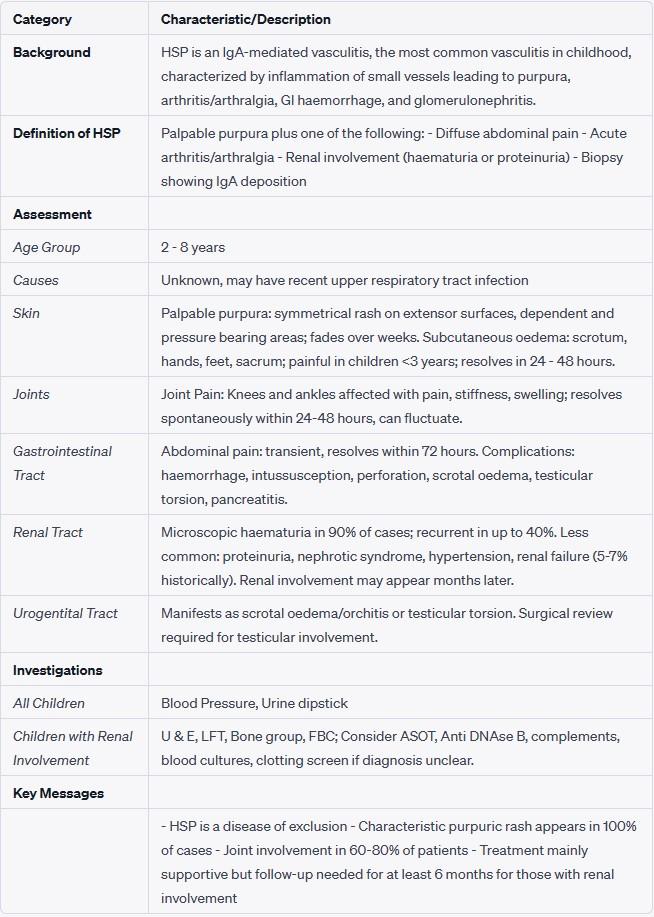Download A4Medicine Mobile App
Empower Your RCGP AKT Journey: Master the MCQs with Us!

Henoch-Schönlein Purpura (HSP), also known as IgA vasculitis, is a relatively common vasculitic syndrome that primarily affects children. This condition is characterized by inflammation of small blood vessels, leading to a range of clinical symptoms and distinctive skin manifestations. While HSP can affect individuals of any age, it most frequently occurs in childhood, with a peak incidence in preschool and school-aged children. The hallmark of HSP is the development of palpable purpura, typically seen on the lower extremities, along with other systemic symptoms that may involve the joints, gastrointestinal tract, and kidneys. Understanding HSP in children is crucial for healthcare providers as it aids in early recognition, appropriate management, and the prevention of potential complications.
References:
Try our Free Plan to get the full article.